#childe harold's pilgrimage
Explore tagged Tumblr posts
Text
Antigua ciudad, Augusta Atenas! dónde están tus nobles ciudadanos, tus almas heroicas? Pasaron para no volver... Únicamente se nos aparecen cuando soñamos en tiempos remotos. Fueron los primeros que recorrieron el camino que conducía la gloria; llegaron a la meta; el mundo sólo les contempló un momento... Y, qué más hicieron?Sus hazañas constituyen los relatos de nuestras escuelas, causando nuestra sorpresa durante horas y horas...En vano buscamos las armas de tus guerreros y el banco de los sofistas por encima de las ruinas de tus torres, ennegrecidas por la niebla de las edades, planea la pálida sombra de tu grandeza.
(Canto segundo, II, Las peregrinaciones de Childe Harold de Lord Byron)

#lord byron#childe harold's pilgrimage#español#literature#poets#romantic#books#culture#tumblr milestone
4 notes
·
View notes
Photo
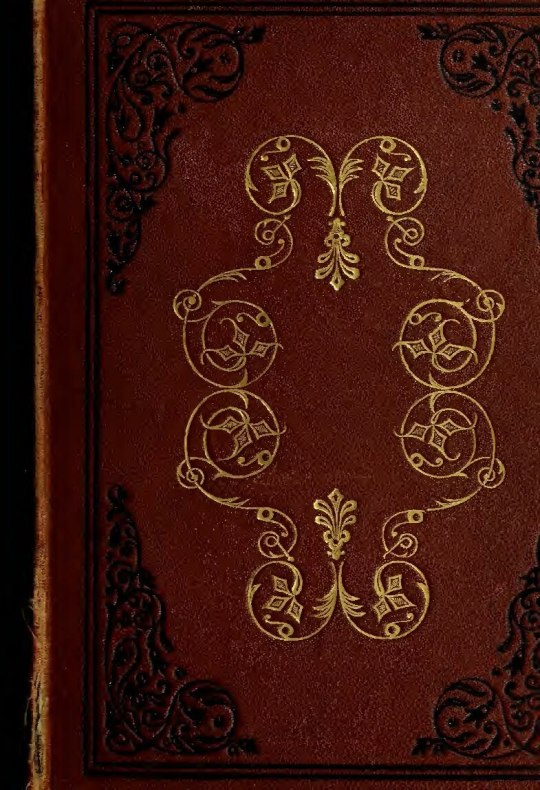
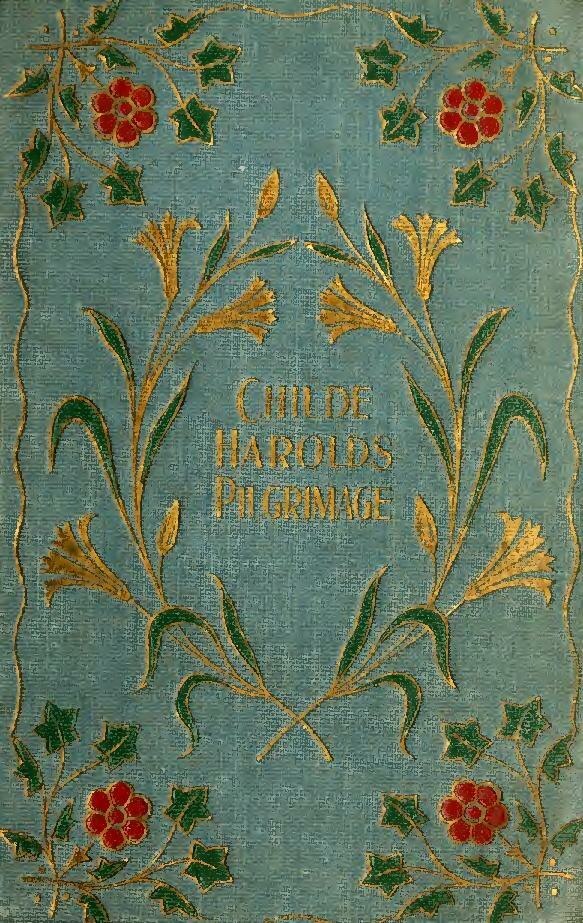
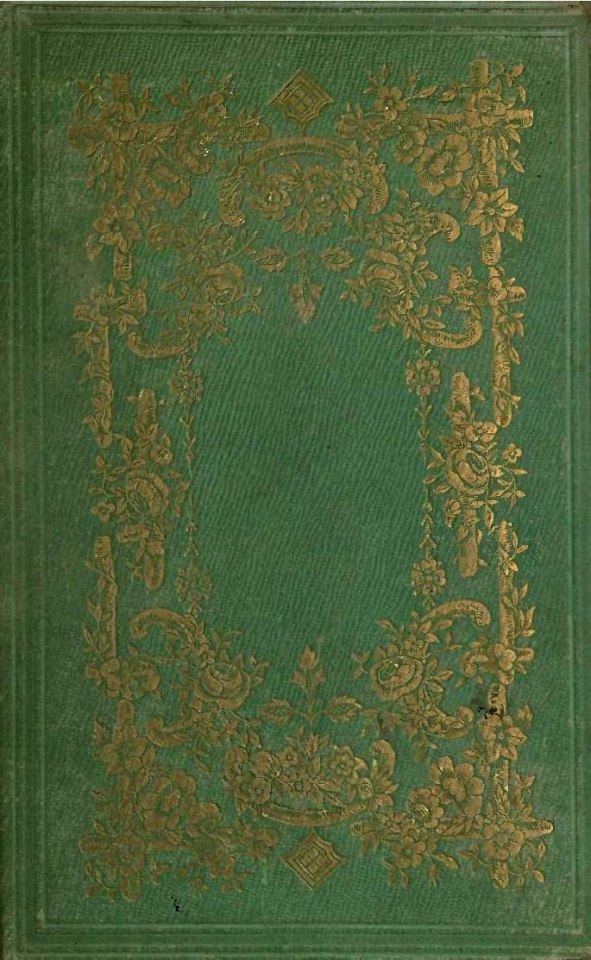
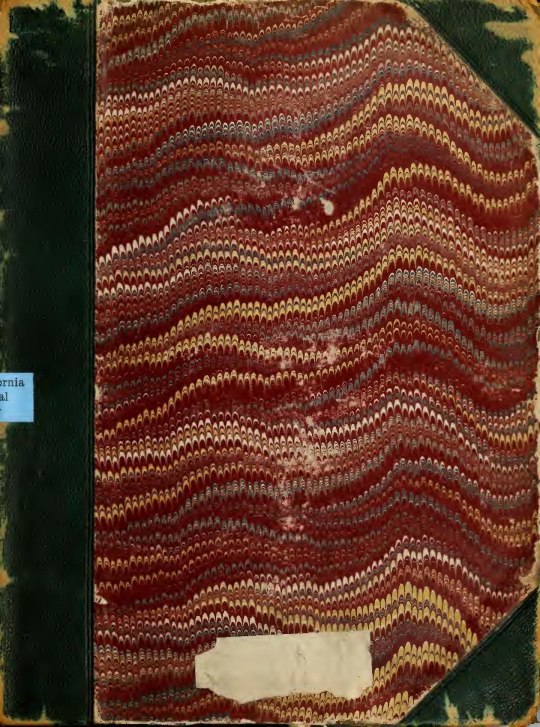
Some pretty covers from editions of Childe Harold’s Pilgrimage.
Sources: 1, 2, 3, 4
(1869, 1900, 1856, 1855)
9 notes
·
View notes
Text

George Gordon, Lord Byron, 'Childe Harold's Pilgrimage', canto III.
#george gordon lord byron#byron#lord byron#quote#poetry#p#romantic poetry#romanticism#romantic poets#19th century poetry#childe harold's pilgrimage
2 notes
·
View notes
Text
I was just re-reading this part yesterday and the resemblance struck me so hard and I knew it had to be an influence on Melville since he blatantly quoted CHP/Byron. BUT I forgot that it was this same section that he quoted from!! Thanks so much for sharing.
The next stanza is also full of foreshadowing imo, (all these stanzas also significantly lead up to the end of CHP):
"His steps are not upon thy paths,—thy fields
Are not a spoil for him,—thou dost arise
And shake him from thee; the vile strength he wields
For earth's destruction thou dost all despise,
Spurning him from thy bosom to the skies,
And send'st him, shivering in thy playful spray
And howling, to his gods, where haply lies
His petty hope in some near port or bay,
And dashest him again to earth:—there let him lay."
And then this skipping down a few, the last stanzas of the poem:
"Thou glorious mirror, where the Almighty's form
Glasses itself in tempests; in all time,
Calm or convulsed—in breeze, or gale, or storm,
Icing the pole, or in the torrid clime
Dark-heaving;—boundless, endless, and sublime—
The image of Eternity—the throne
Of the Invisible; even from out thy slime
The monsters of the deep are made; each zone
Obeys thee: thou goest forth, dread, fathomless, alone."
"And I have loved thee, Ocean! and my joy
Of youthful sports was on thy breast to be
Borne like thy bubbles, onward: from a boy
I wantoned with thy breakers—they to me
Were a delight; and if the freshening sea
Made them a terror—'twas a pleasing fear,
For I was as it were a child of thee,
And trusted to thy billows far and near,
And laid my hand upon thy mane—as I do here."
"My task is done—my song hath ceased—my theme
Has died into an echo; it is fit
The spell should break of this protracted dream.
The torch shall be extinguished which hath lit
My midnight lamp—and what is writ, is writ—
Would it were worthier! but I am not now
That which I have been—and my visions flit
Less palpably before me—and the glow
Which in my spirit dwelt is fluttering, faint, and low."
"Farewell! a word that must be, and hath been—
A sound which makes us linger; yet, farewell!
Ye, who have traced the Pilgrim to the scene
Which is his last, if in your memories dwell
A thought which once was his, if on ye swell
A single recollection, not in vain
He wore his sandal-shoon and scallop shell;
Farewell! with HIM alone may rest the pain,
If such there were—with YOU, the moral of his strain."
Ishmael, for the love of all that’s holy - if you’re going to quote Byron, fucking quote him properly! Your version:
“Roll on, thou deep and dark blue ocean, roll! Ten thousand blubber-hunters sweep over thee in vain.”
The correct version from Childe Harold’s Pilgrimage:
CLXXIX
Roll on, thou deep and dark blue Ocean—roll!
Ten thousand fleets sweep over thee in vain
Although, now that I’m reading that full stanza - you’re doing more foreshadowing, aren’t you?
the full stanza:
CLXXIX.
Roll on, thou deep and dark blue Ocean—roll! Ten thousand fleets sweep over thee in vain; Man marks the earth with ruin—his control Stops with the shore;—upon the watery plain The wrecks are all thy deed, nor doth remain A shadow of man's ravage, save his own, When for a moment, like a drop of rain, He sinks into thy depths with bubbling groan, Without a grave, unknelled, uncoffined, and unknown.
57 notes
·
View notes
Text
36 chapters into moby dick. some thoughts:
- take a shot every time he expresses his love for nantucket or whaling trivia
- i know everyone said it was queer and usually i've come to expect that as hyperbole but this time they weren't joking
- CHILDE HAROLD REFERENCE?!?!?!?!?! BYRON QUOTED?!?!?!?! not surprised bc it is the romantic genre which byron & chp helped inspire & he was the best selling writer in early 19c usa & is noted for his oceanic refs & he & esp childe harolds pilgrimage esp are both noted on wikipedia's "nautical fiction" page but like. i had no idea they were immortalized in moby dick
- "Better sleep with a sober cannibal than a drunken Christian." AAAAAAAHHHHHHHH
- does gay cannibal tumblr know about queequeg & ishmael?
- utterly obsessed with captain ahab for numerous reasons but does anyone else notice how similar he is to captain flint from black sails? like he's literally him but a bit older & combined with silver's leglessness.
- the part where ahab calls stubb a dog lmao
- ishmael getting worried for queequeg when he couldn't find him omg...
- "Where's that girl ? — there, Betty, go to Snarles the Painter, and tell him to paint me a sign, with — 'no suicides permitted here, and no smoking in the parlor;' — might as well kill both birds at once." MRS. HUSSEY!!!!
- i'm sure that all the focus on queequegs spirituality & his consultation with his god yojo wherein he was informed that ishmael had to pick their boat bc yojo demaded it TOTALLY won't prove to have any prophetic and symbolic consequences later on or anything
- love how the chapters are nice and short but on the flip side that means theyre tricking me into thinking i have less to go than i actually do... as long as i get more ahab i'm good i guess
-melville, at random: and now we take a break from our regularly schedule programming to give you . . . WHALE FACTS! [whips out multiple books on the history of whales and whaling, begins to recite]
#moby dick#currently reading#book reviews#book thoughts#book opinions#literature#american literature#classic literature#herman melville#childe harold’s pilgrimage#captain flint#captain ahab#ishmael#queequeg#lit#classic lit#novels#books
287 notes
·
View notes
Text
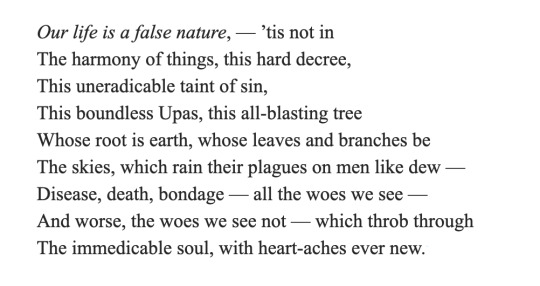
Lord Byron, Childe Harold's Pilgrimage — Canto IV
69 notes
·
View notes
Text


"I love not Man the less, but Nature more."
-Lord Byron, Childe Harold's Pilgrimage
#nature photography#photo#nature#naturecore#my pics#lord byron#poetry#dark academia#dark academia aesthetic#forestcore#elfcore#fantasycore#cottage aesthetic#witchy#green witch#trees#ivy#leaves#leaf#spring#springcore#grandmacore#cottagecore#cottagecore aesthetic#pictures#fairycore#quotes#garden#gardencore#my photos
203 notes
·
View notes
Text

George Gordon, Lord Byron, ‘Childe Harold’s Pilgrimage’, canto III.
#george gordon lord byron#lord byron#byron#quote#p#poetry#childe harold's pilgrimage#19th century poetry#romantics#romanticism#romantic poets
2 notes
·
View notes
Note
I would LOVE to read your analysis of louis as byronic hero as apposed to his reading as gothic heroine. lots of the latter and zero of the former in the fandom.
Sure! Mmm, okay, so –
What are we talking about when we talk about Gothic Heroes?
When we talk about gothic heroes, we’re really talking about three pretty different character archetypes. All three are vital to the genre, but some are more popular in certain subgenres i.e. your Prometheus Hero may be more common in gothic horror, whereas your Byronic Hero might be more likely to be found in gothic romance. That’s not to say they’re exclusive to those subgenres at all, and there is an argument that these archetypes themselves are gendered (in many ways, I think people confuse Anne being an author of the female gothic with Louis being a gothic heroine, but I’ll get into that later), but this is also not necessarily something that’s exclusive.
Anyway, I’m getting ahead of myself, haha, so the three gothic hero archetypes are:
Milton’s Satan who is the classic gothic hero-villain. You can probably guess from the name, but he was originated in John Milton’s 1667 poem, Paradise Lost. He is God’s favourite angel, but God is forced to cast him out of heaven when he rebels against him. As an archetype, he’s a man pretty much defined by his pride, vanity and self-love, usually fucks his way through whatever book or poem he’s in, has a perverted, incestuous family, and a desire to corrupt other people. He’s also defined as being “too weak to choose what is moral and right, and instead chooses what is pleasurable only to him” and his greatest character flaw, in spite of all The Horrors, is that he’s usually easily misguided or led astray. (I would argue that Lestat fits into this archetype pretty neatly, but that’s a whole other post.)
Prometheus who was established as a gothic archetype by Mary Shelley with Frankenstein in 1818. Your Prometheus Hero is basically represented by the quest for knowledge and the overreach of that quest to bring on unintended consequences. He’s tied, of course, to the Prometheus of Greek myth, so you can get elements of that in this character design too in that he can be devious or a trickster, but the most important part of him is that he is split between his extreme intelligence and his sense of rebellion, and that his sense of rebellion and boundary pushing overtakes his intelligence and basically leads to All The Gothic Horrors.
And the Byronic Hero, who as the name implies, was both created by and inspired by the romantic poet, Lord Byron in his semi-autobiographical poem, Childe Harold’s Pilgrimage which was published between 1812-1818. The archetype is kind of an idealized version of himself, and as historian and critic Lord Macaulay wrote, the character is “a man proud, moody, cynical, with defiance on his brow and misery in his heart, a scorner of his kind, implacable in revenge, yet capable of deep and strong affection.” Adding to that, he’s often called ‘the gloomy egoist’ as a protagonist type, hates society, is often self-destructive and lives either exiled or in a self-exile, and is a stalwart of gothic literature, but especially gothic romance. Interestingly too, in his most iconic depictions he’s often a) darkly featured and/or not white (Heathcliff being the most obvious example of this given Emily Bronte clearly writes him as either Black or South Asian), and b) is often used to explore queer identity, with Byron himself having been bisexual.
Okay, but what about the Gothic Heroine?
Gothic heroines are less delineated and have had more of an evolution over time, which makes sense, given women have consistently been the main audience of gothic literature and have frequently been the most influential writers of the genre too. The gothic genre sort of ‘officially’ started with Horace Walpole’s 1764 novel, The Castle of Otranto and Isabella is largely regarded as the first gothic heroine and the foundation of the archetype, and the book opens even with one of the key defining traits – an innocent, chaste woman without the protection of a family being pursued and persecuted by a man on the rampage.
The gothic heroine was, for years, defined by her lack of agency. She was innocent, chaste, beautiful, curious, plagued by tragedy and often, ultimately, tragic. Isabella survives in The Castle of Otranto, but she’s one of the lucky ones – Cathy dies in Wuthering Heights, Sybil dies in The Picture of Dorian Gray, Justine and Elizabeth both die in Frankenstein, Mina survives in Dracula, but Lucy doesn’t. There’s an argument frequently posited that the gothic genre was, and is, about dead women and the men who mourn them, and Interview with the Vampire certainly lends itself to that pretty neatly.
Of course, the genre has evolved, and in particular by the late 1800s, there was a notable shift in how the Gothic Heroine was depicted. The house became a place of imprisonment where they were further constrained and disempowered, she was infantilized and pathologized and diagnosed as hysterical, and as Avril Horner puts it in her excellent paper, Women, Power and Conflict: the Gothic heroine and ‘Chocolate-box Gothic’, gothic literature of this era “explores “the constraints enforced [by] a patriarchal society that is becoming increasingly nervous about the demands of the ‘New Woman’.”
This was an era where marriage was increasingly understood in feminist circles to be a civil death where women were further subjugated and became the property of their husbands. This was explored through gothic literature as the domestic space evolved into a symbol of patriarchal control in the Female Gothic.
Female Gothic vs Male Gothic
Because here’s the thing – the female gothic and the male gothic are generally understood to be two different subgenres of gothic literature.
While there are plenty of arguments as to what this entails, the basics is that the male gothic is written by men, and usually features graphic horror, rape and the masculine domination of women and often utilises the invasion of women’s spaces as a symbol of further penetrating their bodies, while the female gothic is written by women, and usually features graphic terror, as opposed to horror, while delving more specifically into gender politics. More than that though, its heroines are usually victimized, virginial and powerless while being pursued by villainous men.
The Female Gothic as a genre is also specifically interested in the passage from girlhood to female maturity, and does view the house as a place of entrapment, but she is usually suddenly “threatened with imprisonment in a castle or a great house under the control of a powerful male figure who gave her no chance to escape.”
That’s not Louis’ arc, that’s Claudia’s arc twice over, first with the house at Rue Royale, then with the Paris Coven, and Lestat and Armand aren’t the only powerful male figures who imprison her.
Claudia as the Gothic Heroine
Claudia in many ways is the absolute embodiment of the classic gothic heroine. Even the moment of their meeting is a product of Louis’ Byronic heroism – his act of implacable revenge against the Alderman Fenwick which prompts the rioting that almost kills her. She’s a victim of Louis’ monstrousness before they’ve even met, and while he saves her, he arguably does something worse in trapping her in the house with both himself and Lestat, holding her in an ever-virginal, ever-chaste eternal girlhood, playing into Lestat’s Milton-Satan by enhancing the perversion of family and ultimately infantilizing her out of his own desire for familial closeness.
Claudia has no family protection before Louis and Lestat – a staple of the gothic heroine – she is completely dependent on them in her actual girlhood, and again in adulthood, never developing the strength to be able to turn a companion, to say nothing about the sly lines here and there that further diminish and pathologise her (Lestat calling her histrionic, Louis making her out to be a burden, etc.). This is all further compounded again with the Coven, and when the tragedy of her life ultimately leads to the tragedy of her death.
Louis as the Byronic Hero
Not to start with a quote, but here’s one from The Literary Icon of the Byronic Hero and its Reincarnation in Emily Bronte’s Wuthering Heights:
“Generally speaking, the Byronic hero exhibits several particular characteristics. He does not possess heroic virtues in the usual, traditional sense. He is a well-educated, intelligent and sophisticated young man, sometimes a nobleman by birth, who at the same time manifests signs of rebellion against all fundamental values and moral codes of the society. Despite his obvious charm and attractiveness, the Byronic hero often shows a great deal of disrespect for any figure of authority. He was considered "the supreme embodiment [...] standing not only against a dehumanized system of labor but also against traditionally repressive religious, social, and familial institutions" (Moglen, 1976: 28).
The Byronic hero is usually a social outcast, a wanderer, or is in exile of some kind, one imposed upon him by some external forces or self-imposed. He also shows an obvious tendency to be arrogant, cunning, cynical, and unrepentant for his faults. He often indulges himself in self destructive activities that bring him to the point of nihilism resulting in his rebellion against life itself. He is hypersensitive, melancholic, introspective, emotionally conflicted, but at the same time mysterious, charismatic, seductive and sexually attractive.”
Louis as he exists in the show to me is pretty much all of those things, and I think to argue that he’s a gothic heroine not only diminishes Claudia’s arc, but robs Louis of his agency within his own story. Louis chooses Lestat, over and over again, he’s not imprisoned by the monster in the domestic sphere, he is one of the monsters who’s controlling the household, including making decisions of when they bring a child into it and when Lestat gets to live in it – he wanted to be turned, he wanted to live with Lestat in Rue Royale, and while there are certainly arguments to be made about their power dynamic within the household in the NOLA era, importantly Louis actually gained social power through his marriage to Lestat, particularly through The Azaelia, he didn’t lose it in the way that’s vital to the story of the gothic heroine.
Daniel Hart even said it in a recent twitter thread about Long Face, but there is an element of Lestat and Louis’ relationship that is transactional, and to me, for that to exist, they both have to have a degree of control over their circumstances and choices in order to negotiate those transactions. Claudia is the one who can’t, she’s the one who’s treated effectively as property, and she’s the one who lacks control over her circumstances.
While you could perhaps argue the constraints of the apartment in Dubai lend more to the gothic heroine archetype, I’d argue it as furthering the Byronic trope again by being representative both of Louis’ self-destruction and self-imposed exile. As Jacob has said a few times, Louis does seem to have known to a degree that Armand was involved in Claudia’s death on some level, and it’s that guilt and misery that has him allowing Armand his degree of control. The fact that Louis was able to leave Armand as easily and as definitively as he was I think demonstrates that distinction too – after all, to compare that ending to Claudia’s multiple attempts to leave the confines of the patriarchal house, both in Rue Royale and Paris, which were punished at every turn – first by her rape, then by Lestat dragging her back off the train, and then by the Coven orchestrating her murder.
Louis gets to leave because Louis can leave, he has both the social and narrative power to, and the fact that he does is, to me, completely at odds with the gothic heroine. Louis can, and does advocate for himself, Louis is proud, moody, cynical. Defiance is a key part of his character, just as his exile from NOLA society due to his race, and his chosen rejection of vampire society in Paris, is. He’s intelligent and sophisticated, travels the world, and has misery in his heart, guilt that eats him up, and self-destructive tendencies. That’s a Byronic Hero, baby!
#i also agree with jacob when he says he has a lot more power in his relationship with lestat than he'd admit to#i also think the house in rue royale is both constraining AND liberating for louis#as he's able to live with a sort of honesty he couldn't in his mother's house#lestat wields a lot of power in it of course but louis does too#i could keep talking about this but i think that's probably enough for this morning haha#louis de pointe du lac#amc interview with the vampire#iwtv asks#claudia de pointe du lac#welcome to my ama
289 notes
·
View notes
Text

#duality of man#lord byron#don juan#childe harold’s pilgrimage#poetry#literature#english literature#romanticism#poems#1800s#english lit#lit#byron#byronposting#byronic#meme#barbie memes#english lit memes#lit memes#the romantics#romantic era#romantic literature#romantic poetry#my memes
39 notes
·
View notes
Text
"Lake Leman woos me with its crystal face . . . are not the mountains, waves, and skies a part of me and of my soul, as I of them?"
— Lord Byron, Childe Harold's Pilgrimage (1816)

Sabine Jeanson, Geneva, Switzerland
#dreams of 1816#year without a summer#lake leman#lake geneva#lord byron#byron#byronism#byronania#childe harold’s pilgrimage#1816
94 notes
·
View notes
Text
I'd like to talk a bit about the album cover of Skeletá, its s bit different from the band Ghost's previous album covers and it's also something a bit different from Zbigniew M. Bielak.
I would also like to remind some fan groups (that apparently troll) these here are MY thoughts, these ARE NOT FACTS and reporting them without question is irresponsible.
Art is subjective and sometimes peoples interpretation of that art is personal
Anyway with that said...

Looking at the cover of Skeletá at first glance my eyes are immediately drawn to the colored paintings, windows, mirrors or panels (whatever you'd like to call them) and to me they are reminiscent of Candlemass's Nightfall and or Ancient Dreams. (two of the best doom metal albums of ALL TIME imo)
The album covers of Nightfall and Ancient Dreams are paintings from a series by Thomas Cole called The Voyage Of Life

The Voyage of Life seems intrinsically linked to the Christian doctrine of death and resurrection. The artist may have been issuing a dire warning to those caught up in the feverish quest for Manifest Destiny: that unbridled westward expansion and industrialization would have tragic consequences for both man and nature". - National Art Gallery
Whats super cool to me is that Candlemass didn't have google in 1987/89 these guys (well probably Leif?) had to actively find this artwork from the 1800's knowing full well at the time nobody would know wtf they were trying to express UNLESS they also actively, physically, searched. However without some ever knowing where these pieces of art came from, they set a historic tone in music that honestly speaks for itself regardless of the cover art.
The second, well lets just say panel on the right side of Skeletá is also I'd say inspired by Thomas Cole BUT from another of his series called "The Course of Empire" This is a series of five paintings that depicts the growth and fall of an imaginary city.
I'm only going to post one painting from that series (you can look up the rest, if you'd like) which is Desolation (#5)

"The resulting series presents a cyclical view of history in which a civilization appears, matures, and collapses. The artist's distinctly pessimistic vision differed from that of many of his peers; in the early years of the United States' history, its future was considered limitless. Cole drew from a number of literary sources, such as Gibbon's The Decline and Fall of the Roman Empire and Byron's epic Childe Harold's Pilgrimage. The motto he attached to the series was taken from Byron's popular poem: "First freedom, then glory; when that fails, wealth, vice, corruption." -NYC Historical
What does this all mean really? Well...we have a possible homage in the panels to Candlemass and Thomas Cole. (well deserved, so influential and underrated) The cyclical rise and fall of all Ghost's (cities) empires expertly penned by Zbigniew M. Bielak and the possibility (given the juxtaposition in Skeletá) we are headed somewhere between... else? And I hope so
37 notes
·
View notes
Text
There is a pleasure in the pathless woods, There is a rapture on the lonely shore, There is society where none intrudes, By the deep Sea, and music in its roar, I love not man the less, but nature more.
Lord Byron, “Childe Harold's Pilgrimage”.
37 notes
·
View notes
Text
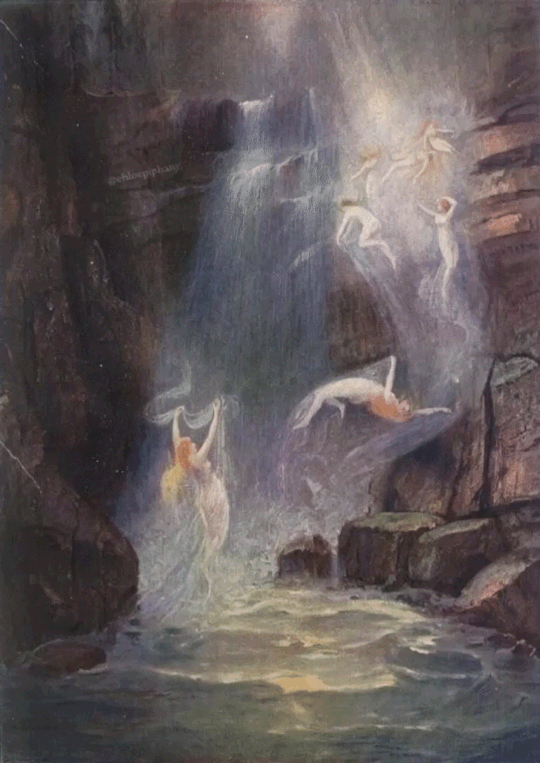

[Childe Harold's Pilgrimage by Lord Byron / Wandgemälde in der Sagenhalle zu Schreiberhau by Herman Hendrich]
#Lord Byron#Lord Byron quotes#poetry#romanticism#book quotes#books and literature#chaotic academic aesthetic#classic academia#classic academia aesthetic#classic literature#dark academia quotes#dark academia#dark academia aesthetic#english literature#literary quotes#literature#literature aesthetics#literature quotes#web weaving#chloepiphany
488 notes
·
View notes